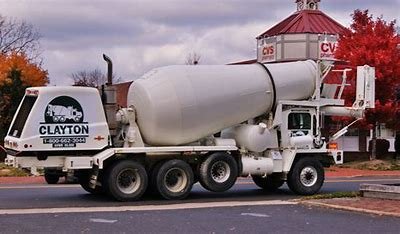The cement mixer, a ubiquitous machine on construction sites worldwide, plays a crucial role in the preparation of concrete, a fundamental building material. This essential tool ensures the thorough blending of cement, sand, aggregates, and water, producing a homogenous mixture that is essential for creating durable and structurally sound structures.
The Evolution of the Cement Mixer
The history of the cement mixer can be traced back to the early 19th century when manual labor was the primary method of mixing concrete. The introduction of horse-powered and later steam-powered mixers revolutionized the construction industry, increasing efficiency and productivity. Today, modern cement mixers are powered by diesel or electric motors, incorporating advanced technology to enhance performance and reliability.
Types of Cement Mixers
There are several types of cement mixers available, each designed to meet specific needs and applications:
Drum Mixers: These are the most common type of cement mixer, featuring a rotating drum that mixes the ingredients. Drum mixers are available in various sizes, from small portable units to large stationary models.
Pan Mixers: Pan mixers use a stationary pan with rotating blades to mix the ingredients. They are often used for producing high-quality concrete for specialized applications.
Twin-Shaft Mixers: Twin-shaft mixers have two parallel shafts that rotate in opposite directions, providing intense mixing action. They are commonly used for large-scale construction projects.
Continuous Mixers: Continuous mixers produce a steady stream of concrete, making them ideal for high-volume production. They are often used in precast concrete plants.
The Mixing Process
The mixing process in a cement mixer involves the following steps:
Loading: The dry ingredients, such as cement, sand, and aggregates, are loaded into the mixer.
Water Addition: Water is added to the dry ingredients.
Mixing: The mixer’s rotating drum or blades thoroughly blend the ingredients, creating a homogenous mixture.
Discharge: The mixed concrete is discharged from the mixer into waiting trucks or directly into the construction site.
Maintenance and Safety
Proper maintenance is crucial to ensure the longevity and efficient operation of a cement mixer. Regular inspections, cleaning, and lubrication are essential. Safety is also a top priority on construction sites. Operators must be trained in the safe operation of cement mixers and adhere to all safety guidelines.
From Ancient Origins to Modern Marvels
The origins of the cement mixer can be traced back to the ancient Romans, who used rudimentary methods to mix mortar by hand. However, the development of the modern cement mixer began in the 19th century with the advent of industrialization. Early designs were simple, often consisting of a drum mounted on a stationary frame. The drum was rotated manually or by animal power, while workers added cement, sand, and water.
As technology advanced, so too did the design of the cement mixer. In the early 20th century, electric motors began to be used to power the rotating drums, increasing efficiency and productivity. The introduction of self-propelled cement mixers further transformed the construction industry, allowing for greater mobility and flexibility on job sites.
A Variety of Mixers for Diverse Needs
There are several different types of cement mixers available, each with its own unique characteristics and applications. Some of the most common types include:
Portable cement mixers: These are small, lightweight mixers that are easy to transport and maneuver. They are often used for smaller construction projects or for mixing concrete on-site.
Stationary cement mixers: These are larger mixers that are mounted on a fixed base. They are typically used for larger construction projects where a high volume of concrete is required.
Truck-mounted cement mixers: These mixers are mounted on the back of a truck, allowing for easy transportation and delivery of concrete to job sites.
Pan mixers: These mixers have a pan-shaped drum that rotates on a vertical axis. They are often used for producing high-quality concrete for specialized applications.
The Future of Cement Mixing: Innovations on the Horizon
As technology continues to advance, we can expect to see further innovations in the design and operation of cement mixers. For example, there is increasing interest in the development of automated mixing systems that can optimize the mixing process and reduce the risk of human error. Additionally, there is a growing focus on developing more energy-efficient and environmentally friendly cement mixers.
Frequently Asked Questions About Cement Mixers
What is a cement mixer?
A cement mixer is a machine used to mix concrete, which is a composite material made up of cement, sand, gravel, and water. It consists of a rotating drum with mixing paddles that are designed to blend the ingredients together.
How does a cement mixer work?
The dry ingredients, such as cement and sand, are added to the drum of the mixer. Water is then added, and the mixer is started. As the drum rotates, the mixing paddles churn the ingredients together, ensuring a uniform consistency.
What are the different types of cement mixers?
Cement mixers come in a variety of forms, including:
Portable cement mixers
Stationary cement mixers
Truck-mounted cement mixers
Pan mixers
How long does it take to mix concrete in a cement mixer?
The mixing time can vary depending on the specific requirements of the concrete being produced, but it typically ranges from 1 to 3 minutes.
What is the importance of proper mixing in a cement mixer?
Proper mixing is essential for producing high-quality concrete. If the ingredients are not mixed thoroughly, the concrete may be weak, uneven, or prone to cracking.
How can I maintain my cement mixer?
To maintain your cement mixer, it is important to follow the manufacturer’s instructions and use the correct mixing time.
Conclusion
In conclusion, the cement mixer is an essential tool that has played a vital role in the development of modern infrastructure. Its simple yet ingenious design has enabled the construction of countless structures, from towering skyscrapers to sprawling highways. As technology continues to evolve, we can expect to see even more innovative cement mixers that will help to shape the future of construction.
To read more, click here.

Leave a Reply